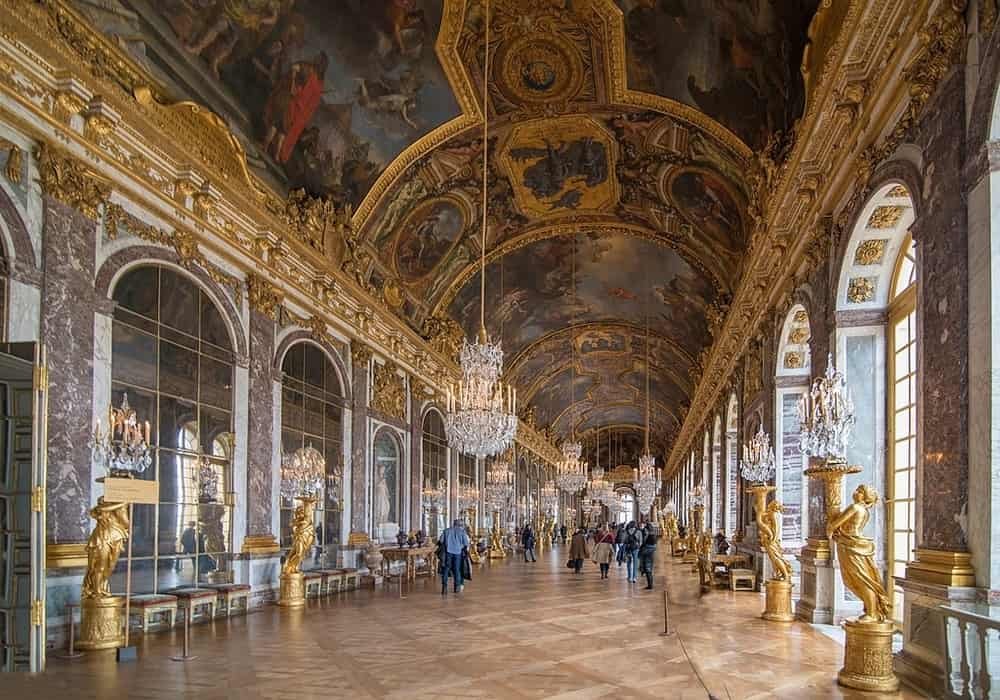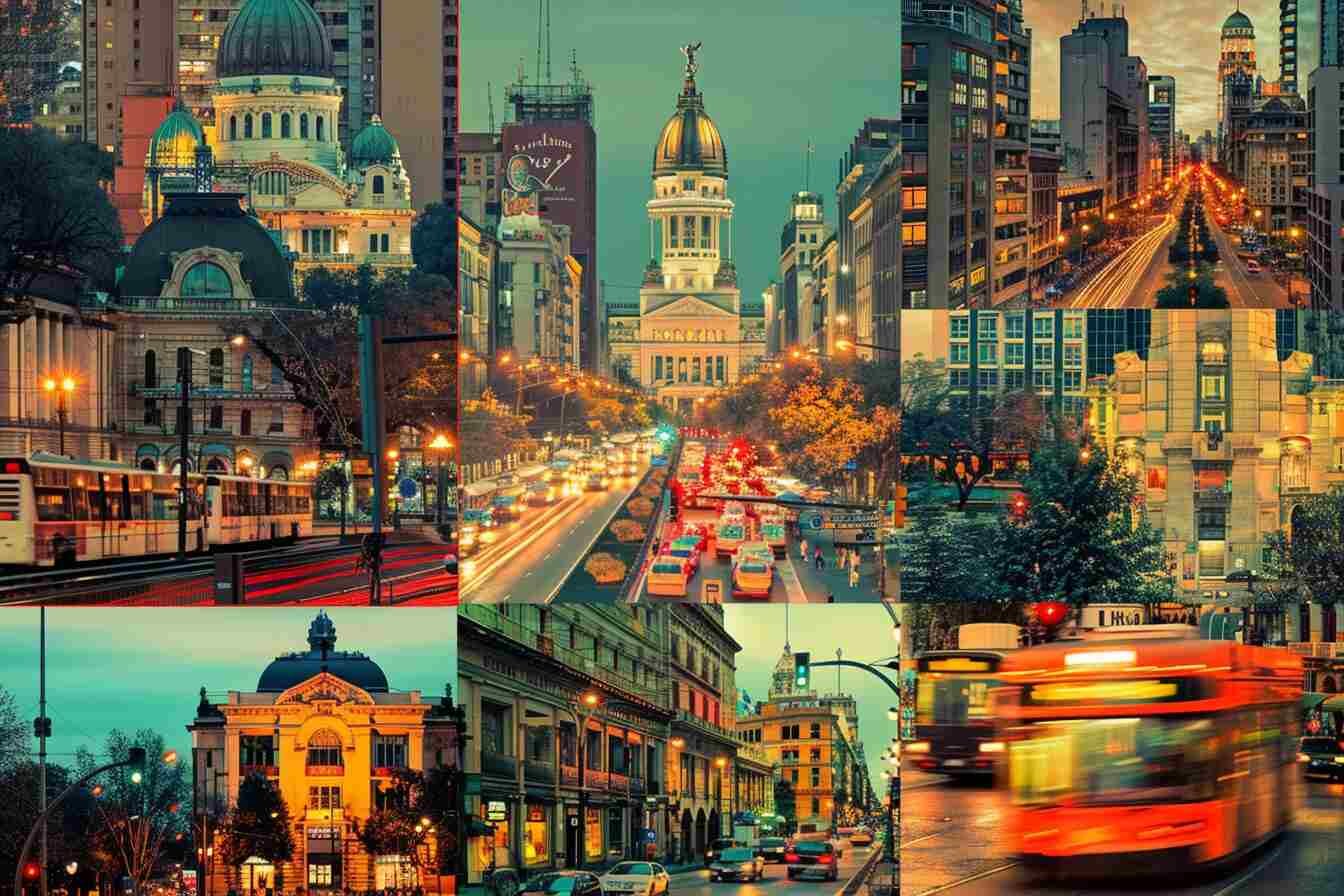Hall of Mirrors Versailles
Symbol of the splendor of the Palace of Versailles, the Hall of Mirrors has made France famous throughout the world, baroque style located in the Palace of Versailles, of which it is one of the emblematic rooms. The masterpiece, designed and built from 1678 to 1684 by architect Jules Hardouin-Mansart and painter Charles Le Brun to the glory of Louis XIV has regained its original shine. Enter the privacy of one of the most beautiful French treasures.
What was the Hall of Mirrors used for?
She is so famous that you imagine she has always been there! However, the Sun King did not decide to build this marvelous Hall of Mirrors – in place of the Italian-style terrace laid out by Le Vau facing the gardens – until the end of the Dutch War. This was in 1678, the year that marked the height of Louis XIV’s reign. While Versailles would become the seat of government, the Grande Galerie, as it was called at the time, was intended to immortalize the glory of the sovereign. Even today, when you enter this room designed by architect Jules Hardouin-Mansart, you feel small… Seventy-three meters long, ten meters wide, twelve meters high, this gallery disproportionate is bathed in the light that enters through seventeen large windows and is reflected in seventeen glass panels on the opposite wall. It is framed on the left (to the west) by the Salon de la Paix, and on the right (to the east) by the Salon de la Guerre.
Ceiling of the Grand Gallery
Impossible not to look up: the painted ceilings of the vault describe the political and military exploits of the Sun King. History over a thousand square meters! These impressive compositions decorated with allegories and trompe-l’oeil extol with emphasis the first years of the reign of Louis XIV, from 1661 to the peace of Nijmegen, in 1679. The author of this piece of bravery? The king’s painter, Charles Le Brun, of course, who is there at the peak of his art. On this immense vault, it is a question of domestic policy – the ovals in the center illustrate the four foundations of government: Justice, Finances, Commerce, Arts – but also of foreign policy. Particular allusion is made to the wars of Holland and Devolution, but it is above all a charge – not devoid of humor, moreover – against the European powers, the kingdom’s rivals.
Palace of Versailles | Trianon, Queen’s Hamlet and Visits (Chateau de Versailles)
How big is it?
It is 73 m (240 ft) long and 10.50 m (34.4 ft) deep. With its height of 12.30 m (40.4 ft) it reaches to the Attic floor of the Corps de Logis. The square windows on the upper floor, which can be seen from the outside, only serve aesthetic purposes, as there are no rooms inside. The installation of any kind of fireplaces was never contemplated as the Hall of Mirrors was too large to effectively be heated. The gallery is covered with 357 mirrors, ie 21 mirrors on each of the 17 arches facing 17 windows.
What is the significance of the Hall of Mirrors in Versailles?
The Treaty of Versailles, 1919
The Hall of Mirrors was a poignant location for the signing of the treaty as it witnessed the rise and fall of Germany over a 50-year period. In 1871 the gallery was where the establishment of the German Empire was declared, after France was defeated in the Franco-Prussian war. The Treaty of Versailles was the primary treaty produced by the Paris Peace Conference at the end of World War I. It was signed on June 28, 1919, by the Allied and associated powers and by Germany in the Hall of Mirrors in the Palace of Versailles and went into effect on January 10, 1920.
How many chandeliers are in the hall of mirrors?
43 Chandeliers
The Hall Of Mirrors and the 43 Chandeliers => The Hall of Mirrors, the most famous room in the Versailles Palace, was built to replace a large terrace designed by the architect Louis Le Vau and pays tribute to the political, economic, and artistic success of France.
Tips on Visiting the Hall of Mirrors Versailles
The best time to visit the Hall of Mirrors is ideally between mornings and afternoons, preferably on weekdays. This helps you beat the crowd and queues. While going to Versailles, don’t miss out on the infamous fountain shows.
The Hall of Mirrors, a place of history
During the reign of Louis XIV, the gallery was essentially a place of passage, the king preferring to receive distinguished guests in the salons of the large apartments. However, several audiences were granted there, including that to the Doge of Genoa in 1685, to the ambassadors of Siam in 1686 and to those of the Shah of Persia in 1715. Louis XV also received the embassy of King Mahmud I of Turkey in 1742. Anecdotally, the gallery saw the arrest of the Grand Chaplain of France the imprudent Cardinal de Rohan in 1785, before his imprisonment in the Bastille (epilogue of the affair of the queen’s necklace).
The Hall of Mirrors was also the setting for major festivities such as the marriage of the future Dauphin Louis XVI with Marie-Antoinette of Austria in 1770, the reception by General De Gaulle of President John Fitzgerald Kennedy and his wife, the one given in the honor of the last Shah of Iran Mohammad Reza Pahlavi by Valéry Giscard d’Estaing in 1974 or the invitation of representatives of the “G7” by President François Mitterrand from June 4 to 6, 1982.
The Hall of Mirrors gallery transformed into a military hospital during the Franco-Prussian War of 1870
The collapse of the Second Empire in 1870 following the victories of the German army was accompanied by a rapid advance of the enemy into Paris, transformed into an entrenched camp. The Prussians were encamped on the heights of the surroundings, where desperate fighting took place (Buzenval). After the battle of Vélizy on September 19, 1870 and while the Germans entered Versailles, the first wounded began to arrive there, led by Doctor Kirchner.

On the 21st, the Prince Royal of Prussia, the future Frederick III, gave orders to install an ambulance in the castle left unattended. The South Wing was occupied first, then the Hall of Mirrors, and part of the medical service extended to the North Wing as well. Guardians and wardens of the castle were seconded to take care of the wounded Germans.
Sources: PinterPandai, Google Arts & Culture
Photo credit (main photo): Wikimedia Commons
Marie Antoinette, public figure woman and the last Queen of France | The Wife of Louis XVI



